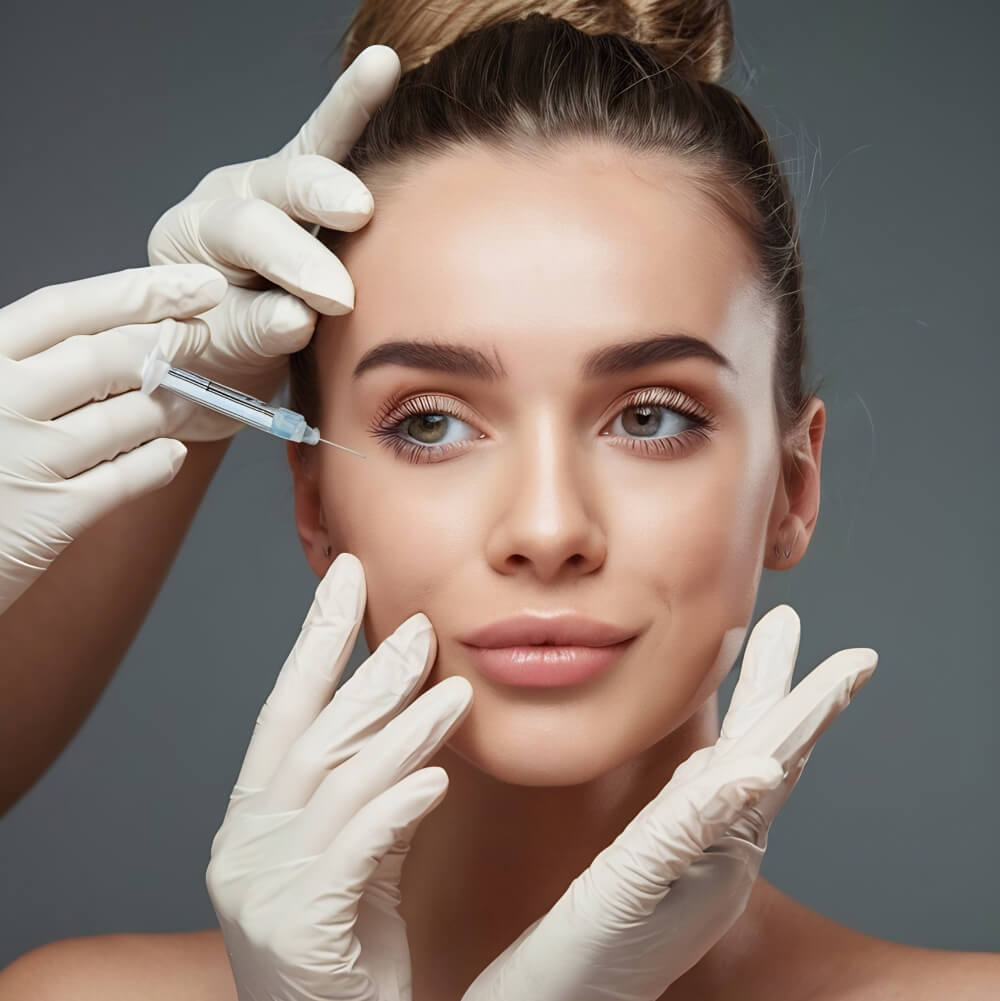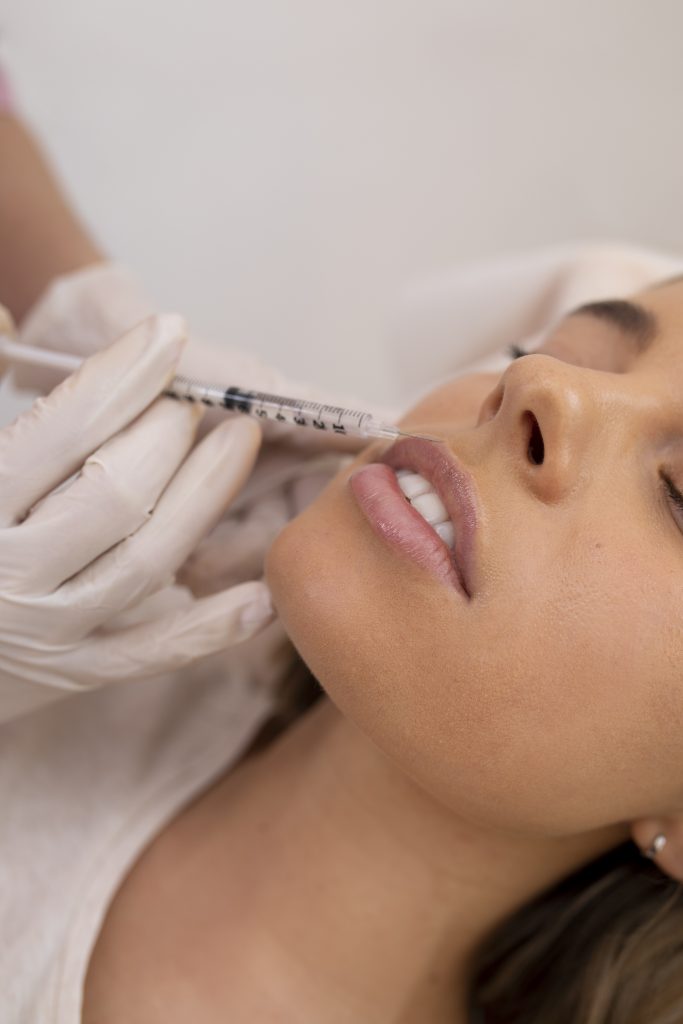Botox Chicago
Botox Injections
chicago botox injections At RAM
At RAM Plastic Surgery, we take pride in offering some of the best Botox in Chicago IL, delivered with precision, artistry, and a personalized touch. Our board-certified providers have extensive experience in facial aesthetics, ensuring your results are natural-looking, refreshed, and tailored to your unique features. Botox is a safe, FDA-approved treatment for reducing the appearance of fine lines and wrinkles caused by repetitive facial movements, making it a popular choice for both women and men. Most healthy adults over 18 with visible signs of aging—or those looking to prevent wrinkles before they form—can be excellent candidates. With our meticulous technique and focus on patient safety, you can feel confident knowing your Botox treatment is performed in a professional, welcoming environment designed to help you look and feel your best.
What is neurotoxin?
A neurotoxin, when used as a cosmetic treatment for wrinkles, is a specialized substance that temporarily relaxes the muscles beneath the skin. Neurotoxins, like Botox®, are derived from a natural bacterium and are injected into specific facial muscles. When injected, they block the signals that tell these muscles to contract. This temporary relaxation helps smooth out wrinkles and fine lines, particularly in areas like the forehead, around the eyes (crow’s feet), and between the eyebrows.
How does it work?
The neurotoxin works by blocking the release of a neurotransmitter called acetylcholine. This neurotransmitter is essential for transmitting signals from nerves to muscles, which is what causes muscles to contract. By preventing the release of acetylcholine, the neurotoxin effectively stops the targeted muscles from contracting. This relaxation of the muscles smooths out the overlying skin, reducing the appearance of wrinkles. As a result, the skin appears smoother and more youthful. The effects usually last for three to six months, after which the treatment can be repeated if desired.

What brands do you offer?
At this time we carry Botox® in Chicago IL, but plan to bring on other brands in the future.
What areas can you treat with Botox?
Neurotoxin is versatile and can be used for various aesthetic and medical purposes, both in approved and off-label capacities
- Forehead
- Glabella ( “11 lines”)
- Brows (brow lift, asymmetry correction)
- Crow’s Feet
- Bunny lines
- Lip (lip flip, “smoker’s lines)
- Marionette Lines
- Gummy Smile
- Chin
- Jawline (massesters)
- Neck (platysmal bands, horizontal lines)
- Hyperhidrosis
- Migraines

Not a Fan Of Botox?
If you’re not ready for Botox in Chicago, IL, RAM Plastic Surgery offers a wide range of other advanced skin wellness treatments designed to rejuvenate your appearance and boost your confidence. Our AnteAGE skincare line uses cutting-edge growth factor technology to improve skin texture and reduce fine lines naturally. Exion skin tightening is a non-invasive treatment that uses radiofrequency energy to lift and firm sagging skin without surgery. For inflammation reduction and accelerated healing, our Red Light Therapy promotes collagen production and enhances skin tone. SkinPen Microneedling stimulates your body’s own collagen to smooth wrinkles, minimize scars, and improve overall skin quality. Plus, our IV Therapy delivers essential vitamins and hydration directly into your bloodstream to revitalize your skin from within. Together, these treatments offer effective alternatives or complements to Botox, helping you achieve radiant, youthful skin tailored to your unique needs.
FAQs
Questions About Botox in Chicago
The pain associated with neurotoxin injections is typically minimal and varies from person to person.
The number of units you’ll need varies based on several factors, including:
1. Treatment Area:
• Different areas require different amounts of Botox®. For example:
- Forehead lines: Typically 10-30 units.
- Crow’s feet: Usually 5-15 units per side.
- Between the eyebrows (glabella): Around 20-30 units.
- Jawline contouring: Can require 20-50 units, depending on muscle size.
2. Severity of Wrinkles:
• Deeper or more pronounced lines may require more units for effective treatment.
3. Individual Factors:
• Factors like your facial anatomy, muscle strength, and treatment goals can influence the amount needed.
There is no downtime after injections. You may resume daily activities right away, though you may have mild redness or bruising where you were injected. Just no laying down for 6 hours after, and no exercising for 24 hours.
Some people start to see results in 5 days, but max results are seen at 2 weeks, which is when you will be seen for a follow up to see if you need any touch ups.
The effects of Botox® typically last between three to six months, but this can vary based on several factors:
Area Treated:
• Different facial areas may respond differently. For example, injections around the forehead might last longer than those around the eyes.
Individual Variation:
• Each person’s body metabolizes Botox at a different rate. Factors like age, skin type, and metabolism can influence how long the effects last.
Dosage:
• Higher doses may produce longer-lasting results, while lower doses might wear off more quickly.
Frequency of Treatments:
• Regular use of Botox® may lead to longer-lasting effects over time, as the muscles may become conditioned to relax.
Muscle Activity:
• Individuals who frequently use the muscles in the treated area (like those who frown or squint often) might notice that the effects wear off more quickly.
Mild pain, swelling, or bruising at the injection site is common and usually temporary.
Some individuals may experience a headache after treatment, which typically resolves within a day or two. A heavy sensation may be felt as the toxin starts to kick in.
1. Pregnant or Nursing Women:
• The effects of Botox® on pregnancy and breastfeeding are not well-studied, so it’s generally advised to avoid it during this time.
2. Individuals with Allergies:
• Those who have a known allergy to botulinum toxin or any of the components in the Botox® formulation should not receive the treatment.
3. Neuromuscular Disorders:
• Conditions like myasthenia gravis, Lambert-Eaton syndrome, or ALS (amyotrophic lateral sclerosis) can increase the risk of adverse effects. Individuals with these conditions should consult their healthcare provider before considering Botox®.
4. Skin Infections:
• Anyone with an active infection or skin condition in the area where Botox® will be injected should postpone treatment until the condition resolves.
5. Certain Medications:
• Some medications, particularly blood thinners or muscle relaxants, may increase the risk of bruising or other complications. It’s important to discuss any medications with your practitioner.
6. Severe Allergic Reactions:
• A history of severe allergic reactions to any injectable treatments should be discussed with a healthcare provider.
7. Severe Respiratory Issues:
• Individuals with certain respiratory problems may be at higher risk for complications and should consult a doctor before treatment.
8. Unrealistic Expectations:
• Those with unrealistic expectations about the outcomes of Botox® should have a thorough discussion with their provider to align expectations.
Avoid Blood Thinners:
• If possible, avoid medications and supplements that can thin your blood, such as aspirin, ibuprofen, vitamin E, and fish oil, for about a week before your treatment. This can help reduce the risk of bruising.
Limit Alcohol:
• Avoid alcohol for at least 24 hours before the procedure, as it can also increase the risk of bruising and swelling.
Stay Hydrated:
• Drink plenty of water in the days leading up to your treatment. Staying hydrated can improve skin quality and help with overall recovery.
Avoid Facials and Skin Treatments:
• It’s best to avoid facials, chemical peels, or other skin treatments for about a week before your Botox appointment to prevent skin irritation.
Consider Timing:
• Plan your treatment at least a couple of weeks before any significant events or occasions to allow any potential swelling or bruising to subside.
Inform Your Provider:
• Be open about any medical conditions, allergies, or medications you’re taking, as this information is essential for your safety and optimal results.
Relax:
• Arrive at your appointment feeling calm. Stress can sometimes lead to muscle tension, which might affect the treatment.
1. Avoid Touching the Injection Sites:
• Refrain from rubbing or massaging the treated areas for at least 24 hours to prevent the toxin from spreading to unintended muscles.
2. Stay Upright:
• Try to remain upright for at least 4 hours after the treatment. Avoid lying down, bending over, or doing any strenuous activities during this time.
3. Avoid Intense Exercise:
• Refrain from vigorous exercise or activities that cause excessive sweating for 24 hours post-treatment.
4. Limit Sun Exposure:
• Avoid prolonged sun exposure, saunas, and hot baths for a few days, as heat can affect the distribution of Botox®.
5. No Alcohol:
• Avoid alcohol for at least 24 hours after treatment to minimize the risk of bruising.
6. Cold Compress:
• If you experience swelling or bruising, applying a cold compress gently to the area can help soothe discomfort.
7. Follow-Up:
• Attend any follow-up appointments your provider recommends to assess the results and address any concerns.
8. Monitor for Side Effects:
• Keep an eye out for any unusual side effects, such as severe headaches, drooping eyelids, or any signs of allergic reactions. If you notice anything concerning, contact your healthcare provider.



